Speakers (In order of appearance)
Dr. Takashi Hanyuda
Acting Director, Health, Labour and Welfare Division of Liberal Democratic Party, Former Committee Chairman of the House of Councilors Welfare and Labor Division, Former Vice President of the Japan Medical Association Member of the House of Councilors
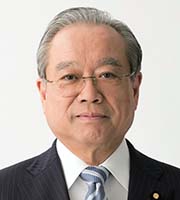
Dr. Koichi Ichimura
The Chair of ISPNO2020 / Specially Appointed Professor, Department of Brain Disease Translational Research, Juntendo University Faculty of Medicine
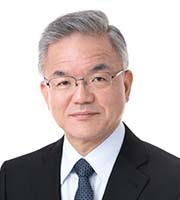
It is my great pleasure to welcome you all to the ISPNO2020 Family Day.
ISPNO is the most prominent international scientific meeting in the field of pediatric neuro-oncology. The Family Day is a traditional and most essential part of ISPNO where patients and family of pediatric brain tumors can gather and share the most up-to-date information in the pediatric brain tumor research. Due to the pandemic, The Family Day for ISPNO2020 is held on-line. I am very grateful for the Organizing Committee of the ISPNO2020 Family Day to have made it happen today despite the circumstances.
In the last 10 years or so, pediatric neuro-oncology has seen an enormous development thanks to the latest technologies and international collaboration. Molecular diagnosis has been introduced in the routine clinic, and successful molecular targeted therapies have been developed, at least for some types of tumors. A nationwide collaboration has also been organized in Japan, where clinicians and researchers work together to improve diagnosis and treatment of childhood brain tumors. We are hoping that the ISPNO2020 Family Day will serve as a venue for the patients and families of brain tumors to communicate with each other and access the latest information in pediatric neuro-oncology. I wish the great success for Family Day and wish you to enjoy the meeting!
Dr. Keita Terashima
Head, Division of Neuro-Oncology, Children’s Cancer. National Center for Child Health and Development
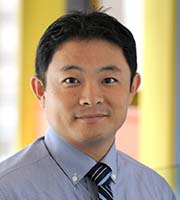
Self-introduction: After pediatric neuro-oncology fellowship training in the United States, I am treating and researching childhood brain tumors in Tokyo. As a pediatrician, I believe it is most important to work as one team with neurosurgeons, radiologists, and other specialists to provide patient and family-centered care.
Content of lecture: How new scientific technologies such as genomic medicine, molecular targeted drugs, and proton beam are being applied to the treatment of childhood brain tumors, focusing on the latest developments in Japan.
Message to all parties involved pediatric brain tumor around the world: ISPNO is the only platform where pediatric brain tumor professionals, patients, and their families from all over the world can come together to freely and actively report research results, activities, and exchange opinions. We would like to conclude this symposium in Japan with the success of this Family Day and make an important step toward the next symposium in Germany.
Ms. Kathy Oliver
Chair and Co-Founder of the International Brain Tumour Alliance
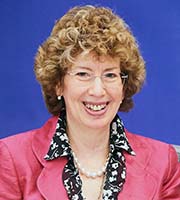
Kathy Oliver is Chair and a founding Co-Director of the International Brain Tumour Alliance (IBTA), a global network established in 2005 as a dynamic worldwide community for brain tumour patient organisations and others involved in neuro-oncology (see https://theibta.org and https://theibta.org/kathy-oliver/). Kathy campaigns for equitable access to therapies; encourages the establishment of brain tumour patient/caregiver support groups in countries where they don’t yet exist; and raises awareness of the challenges of this devastating disease. She is involved in a broad spectrum of high-level, multi-stakeholder initiatives on patient reported outcomes; rare cancers; quality of life; cancer patient rights-based advocacy; brain tumour treatment guidelines; regulatory matters and palliative care. She is the current Co-Chair of the European Cancer Organisation’s Patient Advisory Committee and on the Steering Committee of EURACAN, the European Reference Network for Rare Adult Solid Tumours. Kathy has authored/co-authored a wide range of journal papers, book chapters and magazine articles, and is a frequent speaker at international neuro-oncology and cancer conferences. She is the editor/publisher of Brain Tumour magazine (circulation: 11,000 copies sent for free to 112 countries and distributed at international neuro-oncology and cancer conferences) and the coordinator for the biennial IBTA World Summit of Brain Tumour Patient Advocates
Mr. Nobuyuki Takaki
Chairman-Diffuse Intrinsic Pontine Glioma (DIPG) Symposium Event Executive Committee
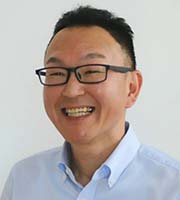
Self-introduction: I lost my beloved 11-year-old daughter to pediatric Diffuse Intrinsic Pontine Plioma (DIPG) in 2013. After a one-year battle with the disease, my daughter passed away in her own home surrounded by her family.
Content of lecture: I have held charity concerts with Yoichi Sugawara, a singer who lost his grandson to this disease, planned gifts for hospitalized children, adopted a petition for in-hospital classes for high school students, and submitted signatures to the Minister of Health, Labor and Welfare Yasuhisa Shiozaki at that time.
Through these activities, we have had many wonderful encounters. “Top leaders in various fields have cooperated with us in promoting our activities in the areas of treatment, research, QOL improvement, support for children and their families, terminal care support, and grief care.
Message to all parties involved pediatric brain tumor around the world: We would like to do our best to solve the problems with the wishes of the children who “wanted to grow up”.
Mr. Hisato Tagawa
Chairman Authorized Nonprofit Organization Yokohama Children’s Hospice Project
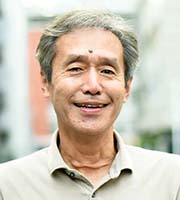
Self-introduction: Founded NPO Smile of Kids in 2003; launched Rira no Ie, an accommodation facility for sick children and their families, in 2008; established NPO Yokohama Children’s Hospice Project in 2017 and became its president. In 2017, I founded the NPO Yokohama Children’s Hospice Project and became its president. I am also a board member of the NPO Brain Tumor Network, and in October 2021, completed construction of the Yokohama Children’s Hospice – Umi to Sora no Ouchi, and am aiming to promote pediatric palliative care and children’s hospice.
Content of lecture: Meaning of establishing the Yokohama Children’s Hospice
Message to all parties involved pediatric brain tumor around the world: Establish a cure for malignant brain tumors, which are difficult to treat, and support patients and children to live as human beings!
Dr. Junichi Hara
Chief and Associate Director of the Pediatric Medical Center Osaka City General Hospital
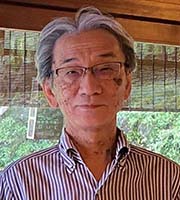
Self-introduction: I have been involved in pediatric oncology for almost 40 years since I graduated from medical university. I have been working at the Osaka City General Hospital, one of the base hospitals for pediatric cancer, since 2005. During this time, I have learned a lot from many children with cancer and their families. I believe that one of my missions is to pass on the many things I have learned to the younger generation.
Content of lecture: Since I moved to my current hospital, I have been treating more and more patients of the AYA generation. In the process, I have come to know about their deep concerns accompanied by a sense of isolation. In 2015, we opened a 27-bed ward exclusively for the AYA generation, based on the belief that peer support, which is effective for pediatric patients, would also be beneficial for the AYA generation. In the lecture, I will introduce the AYA generation ward and the efforts made there.
Message to all parties involved pediatric brain tumor around the world: The medical care for pediatric brain tumors in Japan, especially the system, is still inadequate. To break through the current situation in Japan, we need the voices of patients’ families. I hope we can incorporate the leading examples from overseas.
Mr. Keita Kasai
Second Semester of PhD Course, Osaka University Graduate School of Human Sciences: Sociology of Culture
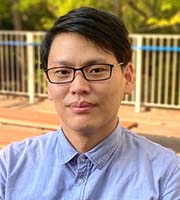
Self-introduction: I was diagnosed with a brain tumor (glioma) when I was 16 years old, and I am currently doing research on “Independence of Young Cancer Survivors” at graduate school.
Content of lecture: I would like to introduce and share the voices and thoughts of those who have experienced pediatric brain tumors through the surveys I have conducted and interactions with other patients. Such as “I was troubled at that time,” and “I am thinking about it now”, including what they can understand in retrospect. We hope that these voices will help society to understand those who have experienced pediatric brain tumors.
Message to all parties involved pediatric brain tumor around the world: I think that brain tumors are not something to be cured, but something to be lived with, and I am able to believe this because of the efforts of all the medical professionals who have devoted themselves to improving brain tumor treatments, and all the supporters who have been always there for those who have experienced brain tumors and their families. I hope that today’s ISPNO Symposium and Family Day will become one of the “power”.
Mr. Tsubasa Nishimura
Participants in the Discussion of the AYA Generation “To Live Life Your Own Way”
I was diagnosed with medulloblastoma at the age of 14, and I am currently in my second year of working after graduating from college and working for a general company.
I’m looking forward to hearing the lectures and the stories.
Ms.Aina Saito
Participants in the Discussion of the AYA Generation “To Live Life Your Own Way”
I was diagnosed with the craniopharyngioma and had a hydrocephalus surgery at age 7, followed by the radiation therapy. After graduating from university, currently I have been employed by the system to hire persons with disabilities for three years.
I would like more people to know about the brain tumors.
Dr. Takaaki Yanagisawa
Professor, Department of Neurosurgery, Jikei University School of Medicine
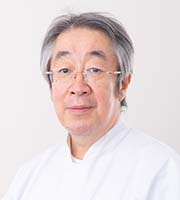
Self-introduction: I am a pediatrician who started out with the intention of specializing in solid tumors in children, and then went on to specialize in brain and spinal cord tumors, which were thought to be the most difficult to treat.
Content of lecture: Pediatric oncology is said to be one of the greatest success stories of 20th century medicine, and great progress has indeed been made in curing leukemia and other incurable diseases. However, today, 20 years into the 21st century, there are still major issues that need to be addressed, the foremost of which is the treatment of brain and spinal cord tumors. On the one hand, there are some diseases that are difficult to cure, and on the other hand, there are some things that have not been achieved in terms of minimizing complications and sequelae from the disease and treatment, so that patients can enjoy a better life after treatment. Today, as we look back at the steps we have taken to achieve our goals, we can see that in the midst of the hardships of the world, there have been moments when the impossible has become possible, and this, more than anything, will support us as we continue to believe in the possibility.
Message to all parties involved pediatric brain tumor around the world: I believe that ISPNO is an opportunity for us to be aware that there are children, families, and medical professionals all over the world who are working towards the same goal. With infinite empathy for everyone in the world, I hope to walk this path together with you, even if it is difficult. For the day when the impossible becomes possible.
Dr. Tomonari Suzuki
Associate Professor, Department of Neuro-Oncology, Saitama Medical University International Medical Center

Self-introduction: I am a neurosurgeon who has been involved in the treatment of pediatric brain tumors for many years. I provide total medical care, from surgery to follow-up.
Message to all parties involved pediatric brain tumor around the world: There is only so much that one person can do, but I believe if people from all over the world get together and tackle the challenges of pediatric brain tumors, we will be able to make a big step. Let us all work together hand in hand!
